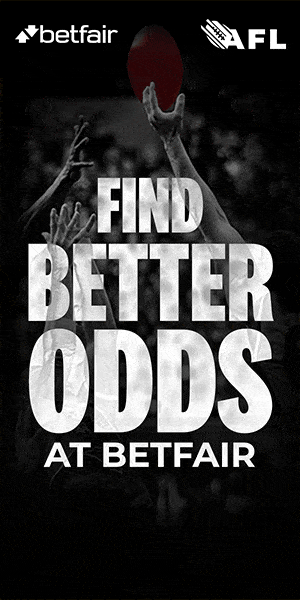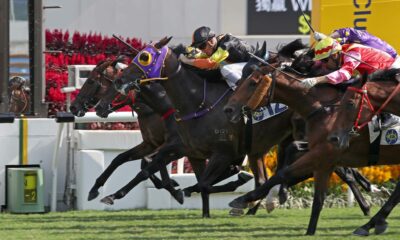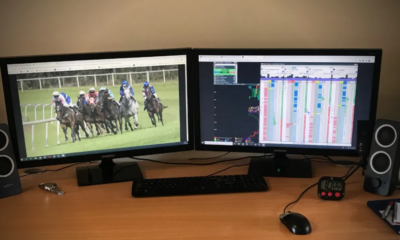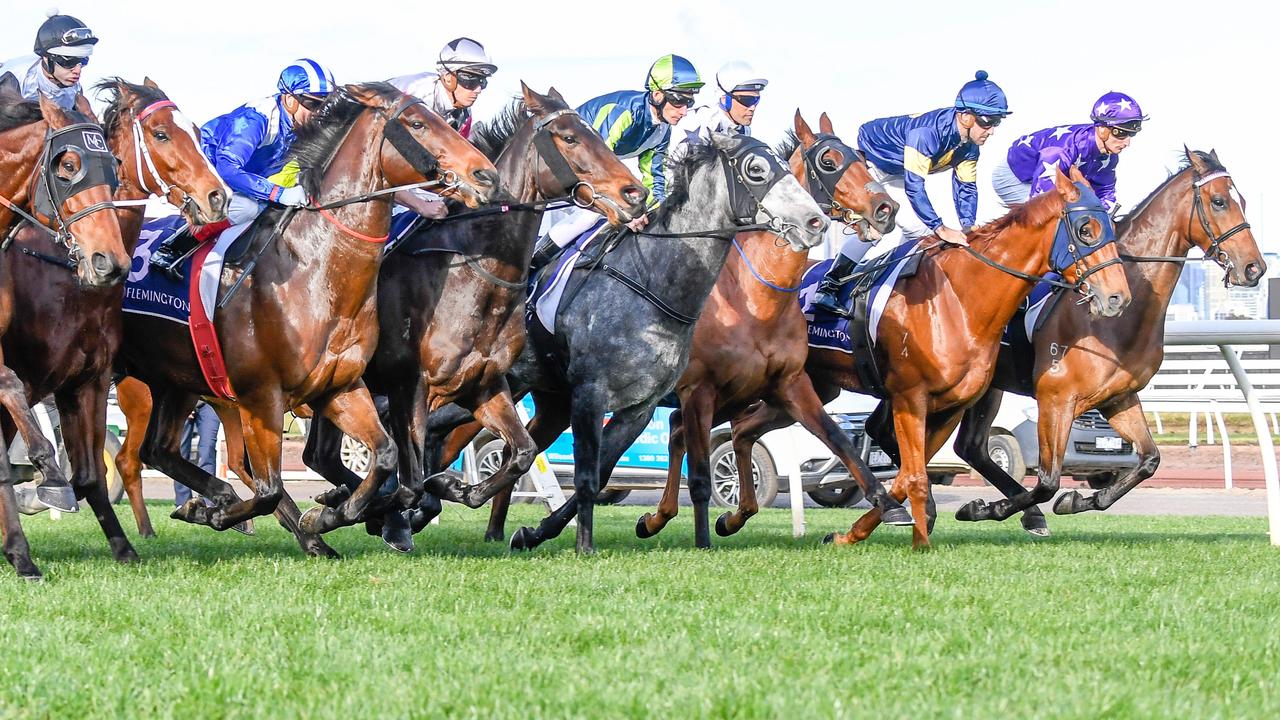
Have you ever watched a race and wondered what it means when a horse is ‘off the bridle’? Want to know what the difference between a filly and a mare is, a colt and a gelding, or a weanling and a yearling?
We’ve provided a full list of common phrases and terms you often hear in Australian horse racing, and what each one really means.
Find our horse racing glossary below!
Horse Racing Glossary
Acceptor: A runner that is paid up by its connections to start in the final field of a race.
Age Of Horse: Birthday of horse always on 1st August each year.
All In: A fixed odds bet that is placed on a market for a future race before final declarations have been made. All-in markets often offer bigger odds due to bets being placed weeks or months in advance, however some all-in markets do not offer refunds if a runner does not take their place.
Apprentice: An inexperienced or junior rider who receive a weight allowance (reduces the handicap weight of the horses that they ride).
Backed Off The Map: A runner that is heavily backed in betting prior to a race.
Back: To bet on the horse to win.
Back Up: A runner which is running for the second time within a short period, typically a week.
Bagman: A bookmakers’ assistant who is responsible for settling bets taken on a race.
Bailed Up: A runner which is racing in restricted room and unable to get clear running.
Bandages: Wrapped around a horse’s legs for stability or protection.
Banker: A runner which is a standout chance in a race. Typically referred to in betting terms for exotic bets, as a standout banker (must finish 1st) or a roving banker (must finish in the placings).
Barriers: The starting gates for a race. Usually drawn at random except for some feature races where the connections of a horse randomly choose the barrier for their runner.
Barrier Blanket: Assists horses who resent being in the starting barriers. The barrier blanket is attached to the back of the stall once the horse is loaded and remains behind when the horse jumps.
Bit: Part of the bridle which is fitted to the horse’s mouth, the bit is the metal bar which is placed over a horse’s tongue.
Bleeder: A horse that suffers exercise-induced pulmonary haemorrhage (EIPH), which is bleeding from the lungs that comes out through the nostrils.
Blinkers: Head gear placed on a horse which is used to lo limit its vision and focus its attention. The application of blinkers, particularly for the first time, is considered a significant gear change and can bring about a sharp improvement in performance.
Blows: When a horse blows in the market it means it is unwanted in betting prior to a race, meaning its odds drift out.
Bolted: When a horse bolts, it means it takes off and the rider struggles to maintain control of it during a race. Conversely, when a horse ‘bolts in’ it means it wins by a convincing margin.
Bookmaker/Bookie: A person licensed to conduct betting on a race. Bookmakers frame a market for a race and offer odds for a punter to wager on.
Box/Boxed (betting): Two or more runners to finish in any order in a multiple bet such as Quinella, Exacta, Trifecta.
Boxed In: A runner which is racing in restricted room with no gap available.
Boxed On: A runner which continues on at the same pace.
Box Seat: Often considered a prime position in running, the box seat is the position on the rail behind the leader.
Box Trifecta: A bet type where a punter places a wager on selected horses to fill the first three placings in any order.
Broken Down: When a horse has suffered a significant injury.
Camel: A very slow horse.
Cast: When a horse has a leg caught in the barrier. Can also refer to a horse throwing a shoe.
Checked: When a horse suffers interference during a race.
Choked down: When a horse gets its tongue over the bit or partially swallows its tongue during a race, making it very difficult to breathe.
Claim: A weight allowance for a horse being ridden by an apprentice.
Class: The grade of the race.
Colours: The silks worn by the jockey.
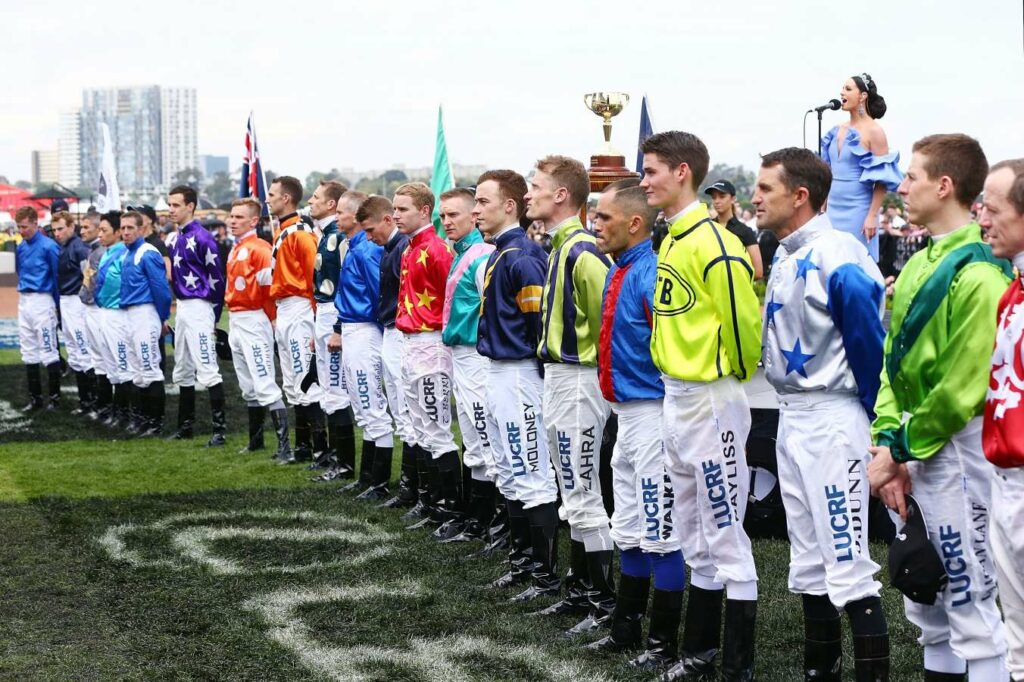
Colt: A male horse which is 3 years and under and has not been gelded.
Connections: Anyone personally connected to the horse such as the owners, representatives, trainers or staff.
Correct Weight: Placings in a race are official.
Cross over noseband: A piece of gear placed on a horse that prevents it from opening its mouth during a race. Often used to help a horse that overraces.
Daily Double: Select the winner in two races offered by the bookmaker.
Dam: Female parent of a foal.
Dead Heat: Two or more horses finishing in an exact tie at the finish line.
Deductions: When a runner is withdrawn from a race after betting has already begun, an amount in the dollar is taken out of the win and place bets proportional to the odds of the withdrawn runner.
Dish lickers: Greyhounds.
Dour: A horse that has no turn of acceleration and is often in search of more ground.
Drift: A runner’s odds are getting longer.
Dwelt: Slow away from the barriers at the start of a race.
Each way: A wager on both the win and place lines for a runner.
Eased: The horse is restrained.
Emergency: Reserves for the race – horses that have accepted but will only gain a start if others in the final field are scratched.
Entire: A male horse over three years old which has not been gelded.
Exacta: A bet type where you select the first and second horse to finish in the exact order.
Exotics: A multiple bet such as Quinella, Exacta, Trifecta, First Four & Quaddie.
False Favourite: A horse that in your opinion is the incorrect favourite for the race.
Farrier: A specialist in equine hoof care.
Favourite: The most popular horse in betting and therefore the one who starts at the shortest odds.
Feature Race: The highest rated race on the card, determined by the category of the race and the prize money.
Field: The horses in the race.
Filly: A female horse which is three years old or younger.
First Four: A bet type where you select the first four placegetters in a race.
First Up: A runner resuming from a spell.
Fluctuation: The movements of the odds of a runner moving up or down in the betting prior to a race.
Front Runner: A horse who usually leads the field during a race.
Furlong: Approximately 200 metres.
Gallop: A fast canter.
Gelding: A male horse of any age which has been castrated.
Get Out Stakes: The last race on the card.
Glue-on shoes: a light aluminium shoe that is attached to the outside of the hoof.
Good Track: Condition between fast and slow. Typically known as the ideal racing surface.
Green: A horse that shows inexperience during a race.
Group Races: The highest class of race, with Group 1 being the best, followed by Group 2 and Group 3.
Handicap: A race where horses carry weights based on their rating.
Hands & Heels: Riding the horse out without using the whip.
Hang: The horse holds its head to one side during a race and often runs in or out in that direction.
Head: Margin between runners.
Heavy Track: The slowest rated racing surface, normally due to heavy rain.
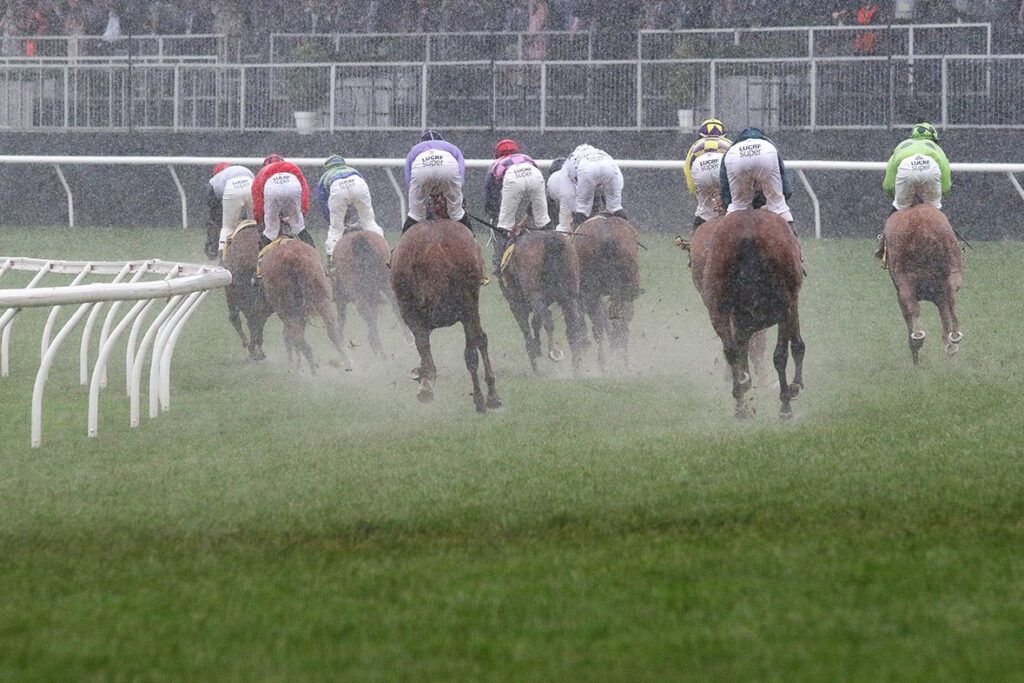
Hoop: Jockey.
Hold All Tickets: When punters are advised to wait until correct weight has been made official after an incident has occurred that may have affected the result.
Hurdle Race: Contested over obstacles. A jumping race over lower fences than steeplechase races.
Impost: The weight to be carried by the horse for a race.
In Foal: Pregnant mare.
In The Money – The horse finished in a position that pays prizemoney.
In The Red: A horse’s odds are less than even money; odds-on.
Knocked Up: The runner stops racing in the straight usually due to getting very tired.
Knuckled: The horse stumbled.
Lame: A change in the gait of a horse in response to pain in a limb.
Late Mail: Last minute tips.
Late Scratching: A runner that is withdrawn from the race after final scratchings.
Lay: When a bookmaker offers better odds because they believe the horse cannot win. A lay bet is a bet on the runner not to win.
Length: A measurement of a horse from nose to tail.
Long Shot: A runner at big odds.
Maiden: A horse who has not won a race.
Maiden Race: A race for non winners.
Mare: A female horse which is four years old or more.
Middle Distance: Races that are within the range of approximately 1600-2000 metres.
Moral: An absolute certainty to win the race.
Mounting Yard: The area where the horses are paraded before a race and jockeys are legged aboard.
Mudlark: A horse that excels on rain-affected ground.
Mug Punter: An amateur who is poor at punting.
Multi: A bet involving multiple legs.
Near side: Left side of a horse; the side which riders are legged aboard.
Neck: Margin between horses, about the length of a horse’s neck.
Nose: The smallest measuring margin between runners.
Nose-roll: A sheepskin roll placed on the horse’s nose to keep the head in line with the body. Often used on horse’s with high head carriages to encourage them to race more truly.
Odds-Against: The odds are longer than even money.
Odds On: Odds of less than even money.
On The Bridle: When a horse has the bit between its teeth and the jockey has contact with its mouth; this means a horse is in effect travelling strongly.
Off The Bridle: When a rider has lost contact with the horse’s mouth, generally meaning the horse is under pressure and not travelling strongly.
Off-Side: Right side of horse.
On The Nose: To back a horse for the win only.
Pacifiers: Hood with gauze eye covers to restrict the vision of an excitable horse.
Paddock: Often referred to when a horse has reached the end of its campaign and will be sent for a break.
Penetrometer: A reading taken from an instrument designed to measure the firmness/softness of the track.
Photo Finish: A result so close it is necessary to use a finish-line camera to determine the winner.
Pig-Root: When a horse kicks upwards with its hind legs, often a sign that they are feeling well or attempting to throw the rider off.
Place: This is when a horse runs either 1st, 2nd or 3rd and you receive a dividend. There must be eight runners or more for three dividends to be paid.
Plunge: Where a horse has been very heavily backed in pre-race betting.
Pool: The total amount of money invested on the tote.
Protest: An objection lodged by the jockey, connections or the stewards regarding the outcome of a race.
Pulling: A horse wants to go faster and is overracing.
Pulled Up: To stop or slow a horse during the race.
Punter: Person placing a wager.
Quadrella: Select the winner of four pre-nominated races on the card. Often in Australia the main quaddie is the last four races on the card.
Quinella: Select the first two horses across the line in any order.
Rail: The running rail for the course.
Ridden Cold: A horse that is ridden in the back section of the field.
Ridden Out: A runner that finishes the race under urgings of the rider
Ridden Upside Down: A horse that was ridden in a position that doesn’t normally suit it best, i.e. a backmarker ridden on speed.
Ring-In: A horse that has been illegally substituted for another runner.
Roughie: A horse at big odds.
Running Double: Select the winner in two consecutive races.
Saddle Cloth: Cloth under the saddle displaying the horse’s number.
Scratched: A runner that is withdrawn from the race.
Second Up: Second run back from a spell.
Silks: Jacket and Cap worn by jockeys to identify themselves.
Sire: The male parent.
Slaughter: A bad ride.
Slow: Rain affected track that is not in the heavy range.
Smokey: A horse that is underrated by the market.
Spell: A break from racing, typically 90 days or more.
Stallion: A male horse for breeding.
Stayer: A horse that races in long distance races.
Stewards: Racing officials responsible for enforcing the rules of racing.
Stone motherless: Last position.
Strapper: A person who is responsible for caring for a horse pre and post-race, including leading it around before the race.
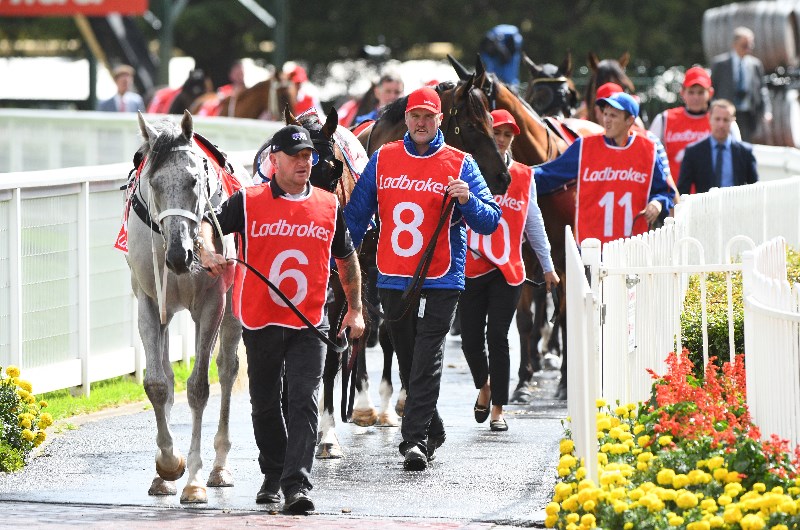
Suspension: The period of time a jockey or trainer is suspended due to an infraction of the rules of racing.
Swooper: A horse that likes to finish on from the tail of the field at the end of the race.
Thumps: A condition that involves irregular spasming of the diaphragm.
Tongue tie: A piece of gear that prevents the horse’s tongue moving over the bit during a race.
Top Fluc: A bet accepting the odds which are the highest fluctuation in the betting ring prior to a race.
Toppy: The top-weighted horse in a race.
Track Conditions: The rating given to a racetrack on race day.
Treble: A bet involving three consecutive races nominated by the TAB. Can also refer to three wins by a jockey or trainer on the same card.
Trifecta: A wager selecting the first three runners across the line.
Under Double Wraps: A horse travelling under a very strong hold by the jockey.
Unders: A runner whose odds are too short in relation to its chances of winning.
Untried: Not raced or not raced at a certain distance.
Wager: A bet.
Warned Off: A licensed person is forbidden from entering a racecourse or licensed racing venue.
Weight For Age: Fixed scale of weights to be carried by horses, determined by their age and sex.
Winkers: Sheepskin head gear which attaches to the cheek straps of the bridle to keep the horses attention forward. A softer alternative to blinkers.
Write Your Own Ticket: The horse is so unlikely to win a bookie would give you any odds you asked for.
Yearling: A 2YO horse.

RacingBet provides free horse racing content for Australian and International race meetings. Our expert team of analysts have a proven history of profit and provide analysis and betting tips on RacingBet daily.

Racing Tips
Sha Tin Racing Tips: Sunday, May 15th

Feature Races
2022 Doomben 10,000 Runner-by-Runner Preview & Tips

Racing Tips
Eagle Farm Racing Tips: Saturday, May 14th


